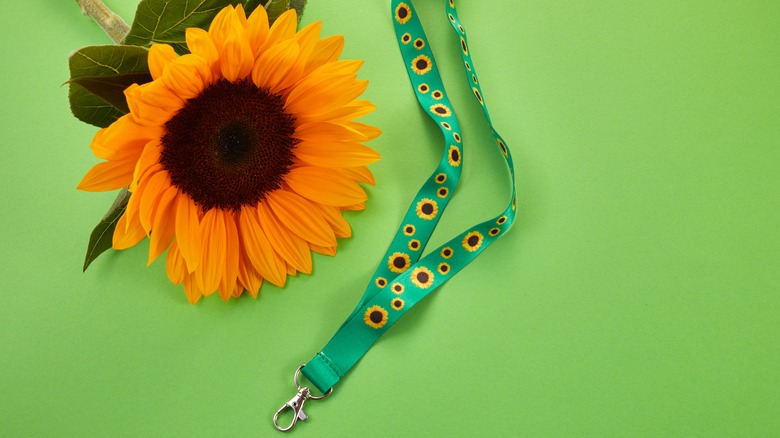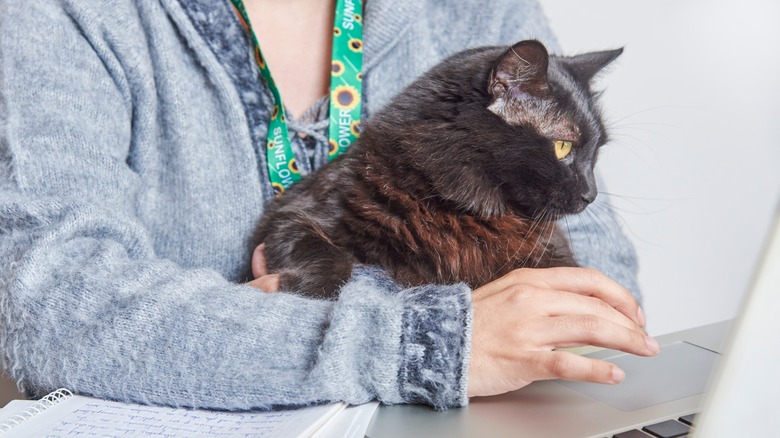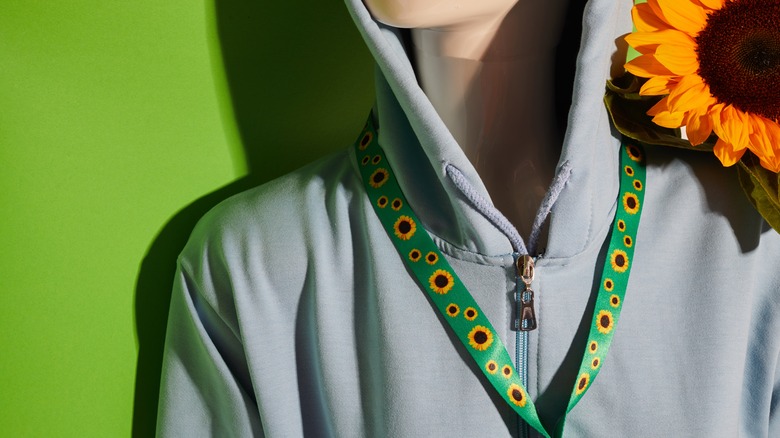The Symbol You Can Wear At Many Airports To Signal Non-Visible Disabilities
Navigating an airport can be difficult. They're filled with noise and lights, security lines, crowds rushing around to make their flights, and personnel that may not be friendly or patient. Airports are stressful for everyone, but for someone living with a hidden disability, it can be so much worse. If you're not familiar with the term, a hidden disability is a condition that affects your life but is difficult or impossible for others to see from the outside. We're talking about things like ADHD, anxiety, some mobility issues, chronic pain, obsessive-compulsive disorder, hearing impairments, and autism, to name a few.
Many airports are now supporting the Hidden Disabilities Sunflower program, which aims to make things easier for folks with these conditions. It was launched at Gatwick Airport in the United Kingdom in 2016 and has been adopted by around 200 airports, including many in the United States, as well as a number of airlines, shops, museums, and other locations. This program features a sunflower lanyard that signals to trained staff that you may need more time, help, or consideration. You don't have to disclose or prove your disability when you wear the lanyard. Here's what you need to know about the Hidden Disabilities Sunflower program, where you can get a lanyard, and some of the companies, airports, airlines, and organizations that support it.
What is the Hidden Disabilities Sunflower program?
Places that participate in the program train their staff about the symbol and how to help out. While some places have limited or voluntary training, others are more mandatory — hopefully, that will spread as word gets out about the program. The idea is to make it clear to those who work with the public that the person wearing the lanyard may require extra time or assistance or other types of support. It's been adopted by some railways, buses, schools, sports teams, theme parks, and more.
If you happen to visit an airport that is participating in the program, you simply have to ask staff where they give out lanyards (if you don't have one already), and they'll direct you to the spot. You may have to show your flight itinerary, but you'll get the lanyard for free. Other participating locations may have them as well. You can also purchase "I support the Sunflower" pins and other merchandise on the official website. That's it. No explanation or paperwork.
As far as the airport, you may get more time to check-in and board, or get help with things like reading signs and directions, or get to keep your family group together. You'll also be offered help and support if you need it. At the moment, not all staff are trained, but those who are may ask if you need assistance. You may also see a sign with the Sunflower, which indicates that the facility supports the program.
More info about the Sunflower program
So how do you find venues that support the Hidden Disabilities Sunflower program? The website has a "Find the Sunflower" link where you can put in your zip code to see places that participate. As far as international airports, you can find ones all over the world like Sydney, Narita, Wellington, Istanbul, Copenhagen, Berlin Brandenburg, Naples, Krakow, Stockholm-Skavsta, Belfast, Edinburgh, Heathrow, Dubai, and many more. American airports are well-represented with places like JFK, Salt Lake City International, Boston Logan International, Seattle-Tacoma International, Dallas/Fort Worth, and plenty of others. You can check if your airline participates or if they're planning to (indicated by an * next to the name) on the website here. You'll also find a list of airlines that are part of the program.
If you have a business that wants to participate, you can find out more on the site as well. Travel should be accessible for everyone, whether they have a visible disability or not, and this is one way to give those with hidden disabilities more support.


